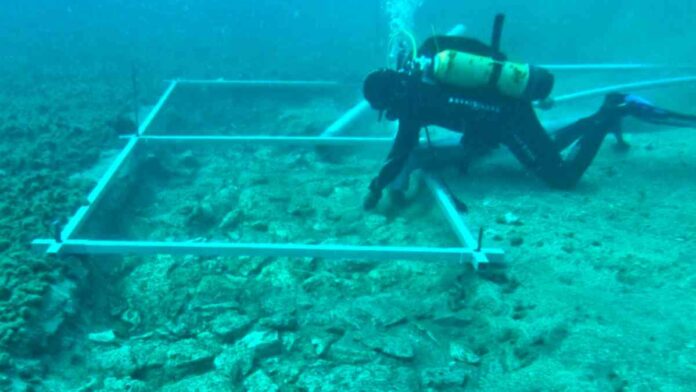At the underwater Neolithic site of Soline, which is located just off the shore of a Croatian island named Korula, the remains of a road that belongs to the Stone Age have been found. According to the findings of the experts, the ancient corridor previously connected the island to a community that was formerly located on an artificial landmass but is now buried somewhere between 4 and 5 meters (13 to 16 feet) beneath the surface of the Adriatic Sea in the Mediterranean.
In 2021, the examination of satellite footage of the waters near Korula by archaeologists allowed them to make the initial discovery of the remnants of Soline. After spotting an odd feature on the ocean floor, the researchers donned their masks, fins, and snorkels and dove into the water to get a better look.
During their exploration, they came upon the walls of an old village that gave the impression of being joined to the main island by a thin isthmus of land. It is thought that the Neolithic Hvar civilization, which previously inhabited the eastern Adriatic, was responsible for building the site, which is now submerged.
And despite the fact that organic items found in Soline have been carbon dated to around 4,900 years ago, the experts believe that the newly discovered route is most likely several millennia older. The road was discovered on the seafloor hidden behind layers of muck. It was constructed out of stone slabs that had been neatly laid on top of one another. The road was around 4 meters (13 feet) wide.
The University of Zadar has issued a statement indicating that the ancient route that originally connected Soline and Korula may have been in use as far back as 7,000 years ago. The fact that the coast of Croatia is lined with islands that shelter the region from strong waves has allowed the paved pathway, in addition to the rest of the village, to remain intact for millennia. This is due to the fact that the islands function as a barrier.
Researchers shared details of their ongoing study near Gradina Bay on the other side of Korula as they announced the finding of the Neolithic route on the same side of the island. A second underwater town has just been found here by the team. It is located at a depth comparable to that of Soline, and it looks to be virtually identical to the site that was discovered two years ago.
The initial excavations of these submerged ruins have unearthed a variety of Stone Age items, such as flint blades, stone axes, and millstone pieces. These newly discovered artifacts, much like the ones that were located at Soline, give off the impression that they are connected to the Hvar culture.




